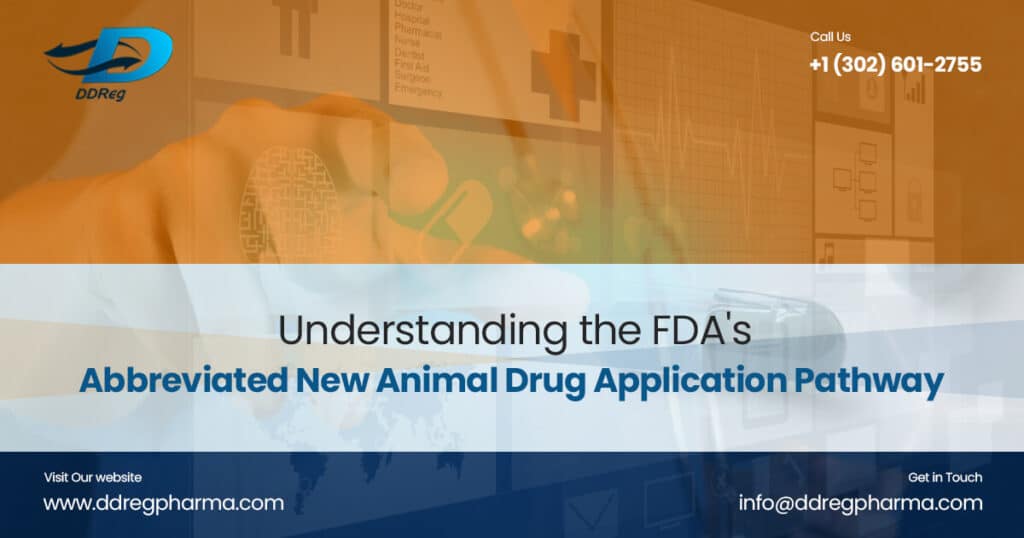- New Animal Drug Application (NADA): used to seek approval of a new animal drug.
- Conditional Approval (CNADA): used to seek conditional approval of a new animal drug.
- Abbreviated NADA (ANADA): used to seek approval of a generic new animal drug.
- Bioequivalence (BE) studies
- Proposed generic products require a BE study; in-vivo BE study protocols should be submitted as an e-submission in question-based review format for each major species approved for use. Sponsors that plan on conducting blood-level BE studies should submit the bioanalytical method validation report in an H submission for review before the study begins.
- Requirement for in-vivo BE study may be waived for certain generic products such as parenteral solutions intended for injection, oral solutions or other solubilized forms, topically applied solutions, and inhalant volatile anaesthetic solutions [5].
- Patent certification & marketing exclusivity [6],
- CMC [7],
- Environmental impact [8]
- Human food safety (provided the drug is to be used in a food-producing animal) [9].
[1] Arunvikram K, Mohanty I, Sardar KK, Palai S, Sahoo G, Patra RC. Adverse drug reaction and toxicity caused by commonly used antimicrobials in canine practice. Vet World. 2014 May 1;7(5):299-5.
[2] US FDA. From an Idea to the Marketplace: The Journey of Animal Drug through the Approval Process. United States Food and Drug Administration. 2020
[3] US FDA. New Animal Drug Applications. United States Food and Drug Administration. 2023
[4] US FDA. Abbreviated New Animal Drug Applications. United States Food and Drug Administration. 2023
[5] US FDA. Bioequivalence. United States Food and Drug Administration. 2023
[6] US FDA. Patent Certification for Generic Animal Drugs. United States Food and Drug Administration. 2023
[7] US FDA. Chemistry Manufacturing and Controls (CMC) Guidance for Industry (GFIs) and Questions and Answers (Q&As). United States Food and Drug Administration. 2023
[8] US FDA. Environmental Impact Considerations. United States Food and Drug Administration. 2023
[9] US FDA. Human Food Safety Guidance. United States Food and Drug Administration. 2023
[10] GrandView Research. Veterinary Medicine Market Size Report. 2022

